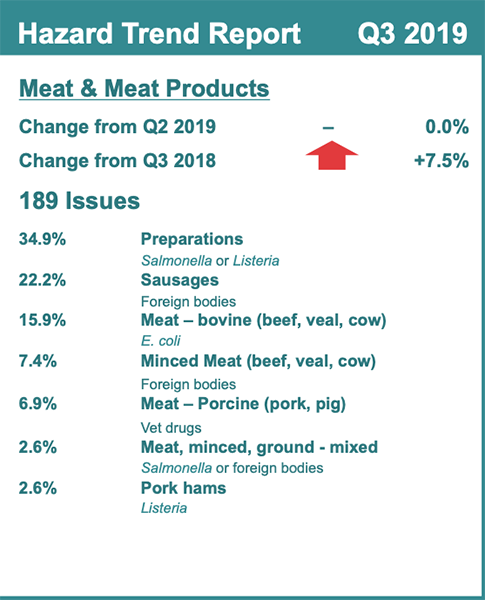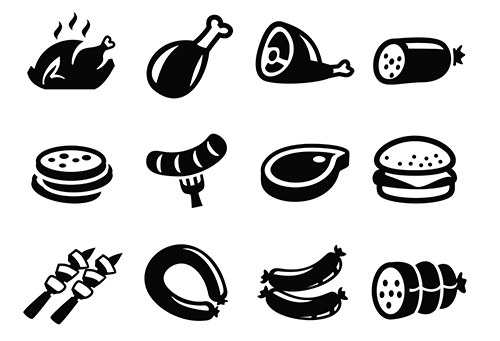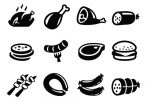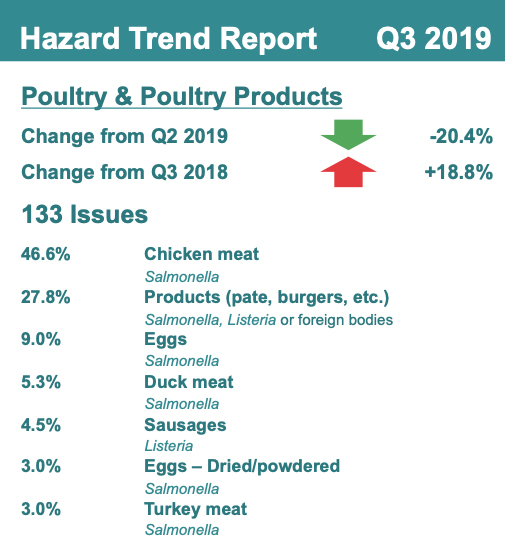Food defense is the effort to protect food from intentional acts of adulteration where there is an intent to cause harm. Like counterterrorism laws for many industries, the IA rule, which established a compliance framework for regulated facilities, requires that these facilities prepare a security plan—in this case, a food defense plan—and conduct a vulnerability assessment (VA) to identify significant vulnerabilities that, if exploited, might cause widescale harm to public health, as defined by the FDA. Lessons learned during the conduct of food defense vulnerability and risk assessments and the preparation of the required food defense plan are detailed throughout this three-part series of articles. Part I of this series is intended to assist facilities that have not yet conducted vulnerability assessments or wish to review those already conducted, by leveraging lessons learned from assessments conducted for the largest and most complex global food and beverage facilities.
Lesson 1: VA outcomes are greatly enhanced if a physical security professional is consulted. In support of this contention, there are several physical security mitigation strategies, which can be employed to support a food defense program, that are frequently under-utilized and are not optimally managed by non-security staff. Also, the FDA seems to promote the use of cameras even though this equipment is unlikely to prevent an incident of intentional adulteration. For organizations that choose to use video surveillance, a competent security professional can help organizations engineer and operate video surveillance for maximum benefits and to meet challenging record-keeping requirements when this mitigation strategy is included in a food defense plan.
Lesson 2: Given the focus by the FDA on the insider, a formal insider threat detection program is highly recommended. Trying to promote the common, “See Something, Say Something” strategy may not be enough. For example, if employees are not clearly told what to look for in terms of uniform requirements, how to identify persons who do not belong or changes to a coworker’s baseline behavior, which may indicate moving toward a path to violence or sabotage, then “See Something, Say Something” may end up being no more than a catchy slogan.
A key element of an insider threat detection program is the completion of effective background checks for all persons who will be allowed in the facility unescorted. This includes temporary employees and contractors. A common theme in many of the recent, serious intentional adulteration incidents was that the person responsible was involved in some sort of grievance observable to coworkers and supervisors. In all insider threat detection programs, the grievance becomes an important trip wire. The Carnegie Mellon University Software Engineering Institute has published a document titled, “Common Sense Guide to Mitigating Insider Threats, Sixth Edition”. In this document is some particularly helpful guidance that can be used to stand up an insider threat detection program, but this is an effort that can take some time to fully implement.
Lesson 3: The FDA has made it abundantly clear that they believe the focus for the food and beverage industry should be the radicalized insider. A closer look at all the recently publicized contamination events suggests that there are other profiles that need to be considered. A good foundational model for building profiles of potential offenders can be found in the OSHA definitions for workplace violence offenders, which has been expanded to address ideologically based attacks. Table I applies those descriptions to the food and beverage industry, with an asterisk placed by those offender profiles that exist in recent incidents and discussed later in the text.
| Class |
OSHA Workplace Violence Offender Description |
Motivation Translated to the Food and Beverage Industry |
| 1 |
The offender has no legitimate relationship to the business or its employee(s). Rather, the violence is incidental to another crime, such as robbery, shoplifting, trespassing or seeking social media fame. |
Behavioral Health Patient *
Social Media Fame Seeker *
Copycat *
Extortion *
Economic motivation * |
| 2 |
The violent person has a legitimate relationship with the business—for example, the person is a customer, client, patient, student, or inmate—and becomes violent while being served by the business, violence falls into this category. |
My load isn’t ready, you are costing me money |
| 3 |
The offender of this type of violence could be a current employee or past employee of the organization who attacks or threatens other employee(s) in the workplace. |
I am upset with a coworker and adulterate to create problems for that person *
I am upset with the company and adulterate as retribution and to harm the brand *
Youthful stupidity
I am not paid enough * |
| 4 |
The offender may or may not have a relationship with the business but has a personal (or perceived personal) relationship with the victim. |
I am upset with an intimate partner/ coworker and adulterate to create problems for that person |
| 5 |
Ideological workplace violence is directed at an organization, its people, and/or property for ideological, religious or political reasons. The violence is perpetrated by extremists and value-driven groups justified by their beliefs. |
Radicalized Insider |
| Table I. A description of OSHA workplace violence offenders and how it can be applied to the F&B industry. |
A supermarket in Michigan recalled 1,700 lbs. of ground beef after 111 people fell ill with nicotine poisoning. The offender, an employee, mixed insecticide into the meat to get his supervisor in trouble. In Australia, the entire strawberry industry was brought to its knees after a disgruntled supervisor “spiked” strawberries with needles. There were more than 230 copycat incidents impacting many companies. A contract employee in Japan, apparently disgruntled over his low pay, sprayed pesticide on a frozen food processing line resulting in illnesses to more than 2,000 people. A contract worker upset with a union dispute with the company at a food manufacturing plant videoed himself urinating on the production line, then uploaded the video to the Internet. Be cognizant of any grievances in the workplace and increase monitoring or take other proactive steps to reduce the risk of intentional adulteration.
Lesson 4: The IA Rule requires that every point, step and procedure be analyzed to determine if it is an actionable process step (APS). The Hazard Analysis Critical Control Point flow charts are a good starting point to comply with this element of the law but cannot be counted on completely to achieve the standard of analyzing every point, step or procedure. Critical thinking and persons familiar with the production process need to be involved to ensure that no steps are missed. Oftentimes companies modify the HACCP flow diagrams after a VA.
Lesson 5: The FDA states in the second installment of guidance (here’s the full copy) to the industry that, “There are many possible approaches to conducting a VA. You may choose an approach based on considerations such as the time and resources available and the level of specificity desired. You have the flexibility to choose any VA approach, as long as your VA contains each required component (21 CFR 121.130).”
The FDA further states that the Key Activity Type, or KAT method, is an appropriate method for conducting a VA because it reflects consideration of the three required elements and the inside attacker. Using this methodology alone, however, can result in substantially more APS’s, which might otherwise be ruled out for practical purposes such as a lack of accessibility or a lack of feasibility to contaminate the product at a point, step or procedure. We have experienced up to a 90% decline in APS’s by utilizing another FDA recommended assessment approach, the hybrid approach, which assesses each point, step or procedure as first whether it is a KAT. Then to qualify as an APS, it must also trigger positively for public health impact, accessibility and feasibility to contaminate the product.
Organizations who have yet to execute vulnerability assessments (due July 26, 2020) or who may wish to reflect back on their existing VA’s in an effort to eliminate unnecessary APS’s should find these strategies helpful to focus limited resources to the areas where they can have the greatest effect. The next two articles in this series will cover more information on electronic access, the value of site tours, comparisons to drinking water security strategies, dealing with multi-site assessments and more. Read Part II of this series on intentional adulteration.






















